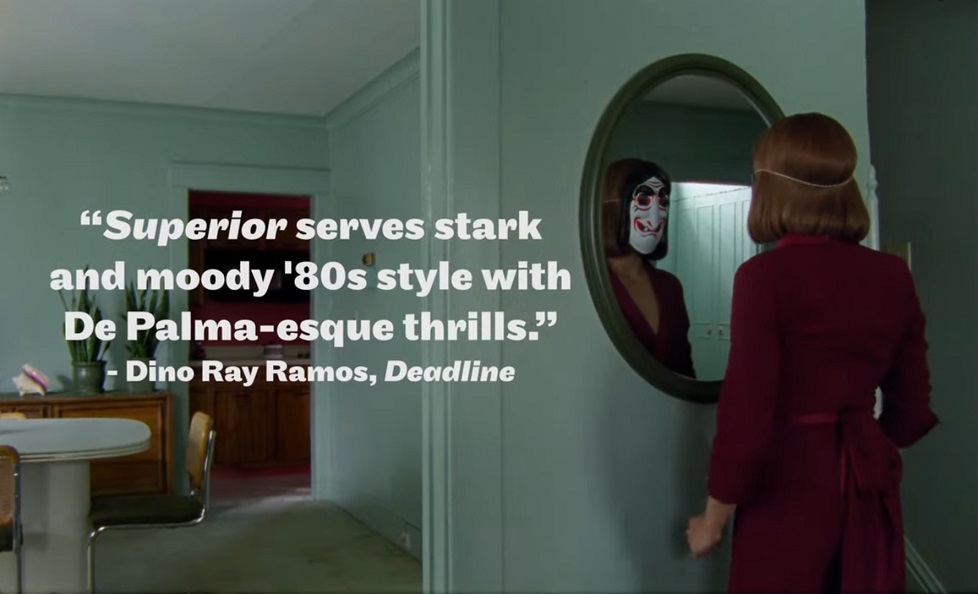THIS TIME RANKING HIS TOP 14 BRIAN DE PALMA FILMS
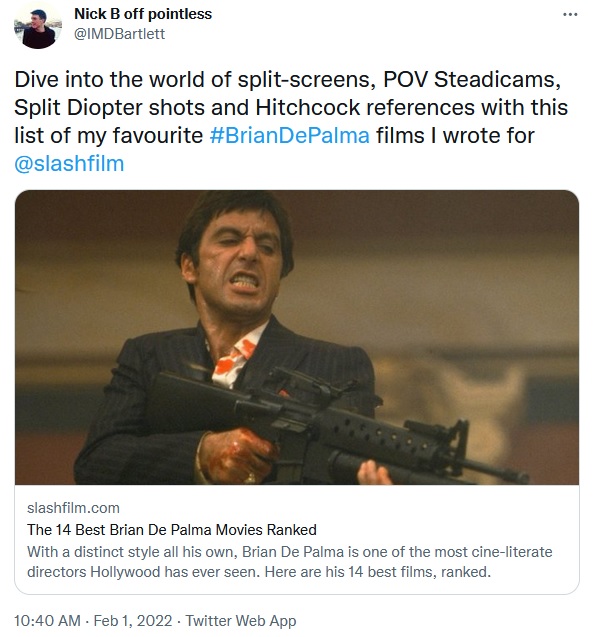
 Hello and welcome to the unofficial Brian De Palma website. Here is the latest news: |
|---|
E-mail
Geoffsongs@aol.com
-------------
Recent Headlines
a la Mod:
Listen to
Donaggio's full score
for Domino online
De Palma/Lehman
rapport at work
in Snakes
De Palma/Lehman
next novel is Terry
De Palma developing
Catch And Kill,
"a horror movie
based on real things
that have happened
in the news"
Supercut video
of De Palma's films
edited by Carl Rodrigue
Washington Post
review of Keesey book
-------------
Exclusive Passion
Interviews:
Brian De Palma
Karoline Herfurth
Leila Rozario
------------
------------
| « | February 2022 | » | ||||
| S | M | T | W | T | F | S |
| 1 | 2 | 3 | 4 | 5 | ||
| 6 | 7 | 8 | 9 | 10 | 11 | 12 |
| 13 | 14 | 15 | 16 | 17 | 18 | 19 |
| 20 | 21 | 22 | 23 | 24 | 25 | 26 |
| 27 | 28 | |||||
De Palma interviewed
in Paris 2002
De Palma discusses
The Black Dahlia 2006

Enthusiasms...
Alfred Hitchcock
The Master Of Suspense
Sergio Leone
and the Infield
Fly Rule
The Filmmaker Who
Came In From The Cold
Jim Emerson on
Greetings & Hi, Mom!
Scarface: Make Way
For The Bad Guy
Deborah Shelton
Official Web Site
Welcome to the
Offices of Death Records
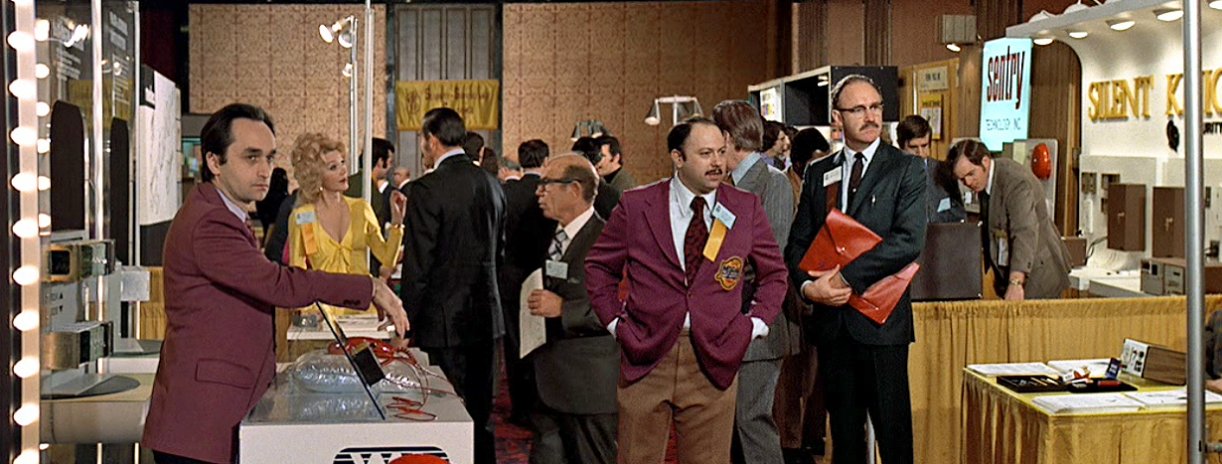
“The Conversation” returns this week in a terrific, newly struck 35 millimeter print supervised by Coppola and distributed by Rialto Pictures, playing Jan. 28 to Feb. 3 at the Music Box. Its enveloping chill feels, looks and — crucially, in a story about a man who eavesdrops for a living — sounds as arresting as ever.
With a role originally offered to Marlon Brando, Coppola’s modestly scaled masterwork turned out to be two of Gene Hackman’s finest hours, in which he delineates a morally haunted surveillance expert’s world in incremental, barely perceptible ways, usually through action and reaction, not words.
Harry reveals little. His San Francisco apartment, furnished in the style of Early Anonymity, contains “nothing of value,” as he tells his building manager in a testy phone call early on, when Harry learns the manager has a key to his place. Outside Harry’s place the building across the street is being razed; Coppola’s script originally filled in many details and larger forces regarding who’s building the “new” San Francisco, and how.
Harry has no car, no phone, a frosty working relationship with his less fastidious fellow surveillance expert Stan, played by John Cazale. The subtly extraordinary opening sequence in “The Conversation,” endlessly rewatchable thanks to sound designer/editor and film editor Walter Murch’s brilliant aural and visual manipulations, takes place in Union Square at lunch time.
The sound wizards record fragments of conversation, from various locations and with various electronic means, between an apparent pair of young lovers (Cindy Williams of “Laverne and Shirley” and Coppola regular Frederic Forrest). Harry has been hired to tape their open-air rendezvous and deliver the results, for $15,000, to an unnamed businessman (Robert Duvall) and his achingly smug assistant (Harrison Ford, a year after “American Graffiti”). Harry doesn’t know anything about their reasons for the surveillance, or care.
What he discovers on the tapes, alone, later, at one of his three reel-to-reel recorders, suggests a crime in the making. Harry’s clouded past has blood on it already. An earlier job Harry worked resulted in the murder of three people. A devout Catholic, he lives his clam-like life with all his residual guilt crammed inside the shell. There’s barely room for occasional trysts with a lover (Teri Garr), or awkward socializing with acquaintances in the bugging community (Allen Garfield plays an East Coast rival).
Guided, gently, by composer David Shire’s solo piano fragments — loneliness, crystallized — “The Conversation” owes an acknowledged debt to Michelangelo Antonioni’s international 1966 sensation “Blowup,” as well as to Hermann Hesse’s “Steppenwolf,” with its riddle of a protagonist, isolated from society and even from himself. What Antonioni did with photography, and the notion of a sinister subplot hiding in plain sight, Coppola and Murch did with sound, and images carefully attuned to that sound. Coppola began working through the themes of “The Conversation” in the late ‘60s, when wiretapping was still legal. On “The Godfather,” Coppola narrowly avoided getting fired off his own movie, by firing those who were conspiring to fire him first. “The Conversation” may have been a smaller project, in the wake of the huge financial success of the first “Godfather,” but it wasn’t much easier for Coppola, as he revealed in a remarkable interview with fellow filmmaker Brian De Palma. Many pages, some key to the lucidity and back story of the narrative, went unfilmed due to time and money.
Many, including me, suspect the movie’s far richer and more troubling without those pages. Some would claim “The Conversation” is Coppola’s most essential work — a bridge between his commercial filmmaker self and the filmmaker striving for personal expression. It’s rarely either/or, of course, with moviemakers who have greatness to share.
Hackman often spoke of his frustrations with Harry, whom even Coppola described as a blank, a cipher. The film has its limitations: not all of the expository details are handled with equal finesse, partly because of those unfilmed pages; in this primarily male universe, the women are expendable, dismissible; and in an otherwise superb portrayal, Hackman seems ever so slightly uncertain in what he has to say, and how, in a key dream sequence.
These are small matters in a key film of its decade. (I had the good fortune to introduce it on Turner Classic Movies once.) Seeing it again in this beautiful new 35 mm print, “The Conversation” seems itself in conversation with an earlier San Francisco-set classic, Hitchcock’s “Vertigo.” Like Coppola’s film, “Vertigo” met an indifferent, vaguely mystified public reception in its initial release. “The Conversation” is also fully conversant in the language of ‘70s downbeat genre pictures with a difference. (Hackman soon went on to director Arthur Penn’s pungent detective tale “Night Moves.”) In that decade, so much modestly budgeted, modestly profitable studio work pre-”Star Wars” wasn’t afraid to unsettle an audience, or leave it hanging, in the service of a story unconcerned with tidy solutions, or dime-store redemption.
Hackman turned out to be exactly right for Harry Caul: He gives us a formidable island, trying desperately not to be seen, or judged. The climax delves into “precognition” visions of horror, of Harry’s own making. Nothing can be trusted, not even the recorded sounds on Harry’s reel-to-reel. It’s not always what you say. It’s how you say it.
Or hear it.
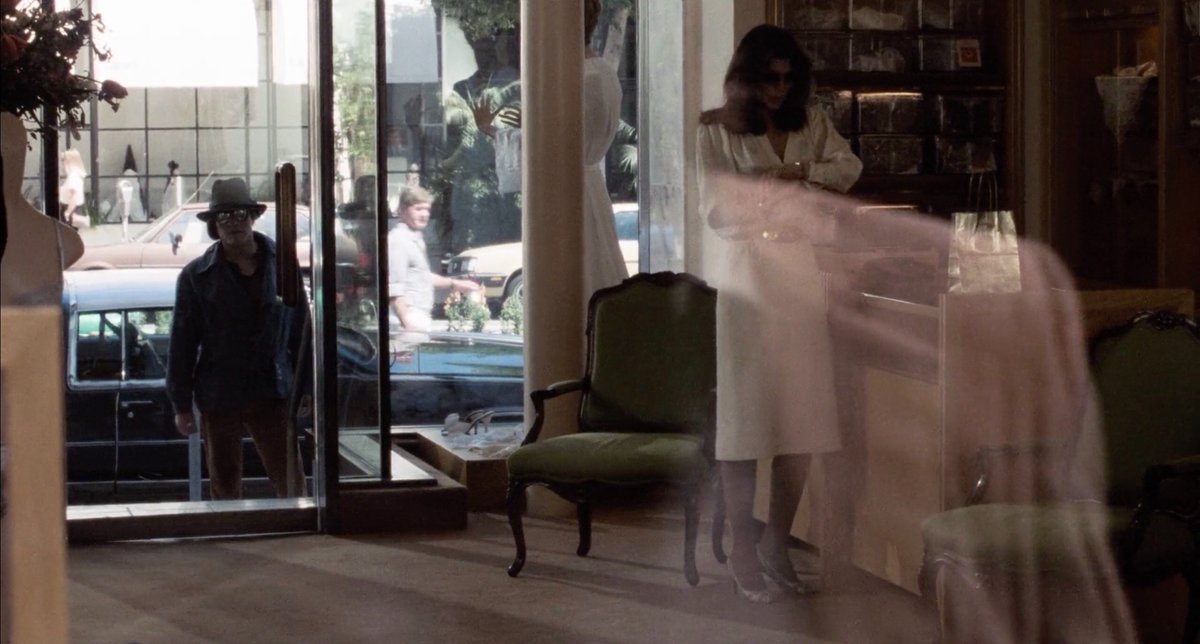
Lewis, the other co-host of the podcast, then responds, "Yeah. I think part of how this podcast has changed how I view films at the moment is that I'm not trying to outsmart the narrative. I know that we talked about it on the Play Misty For Me episode - about kind of just watching the film and not trying to be one step ahead. And that's what I've been trying to do. And I think with this film, especially, it pays off."
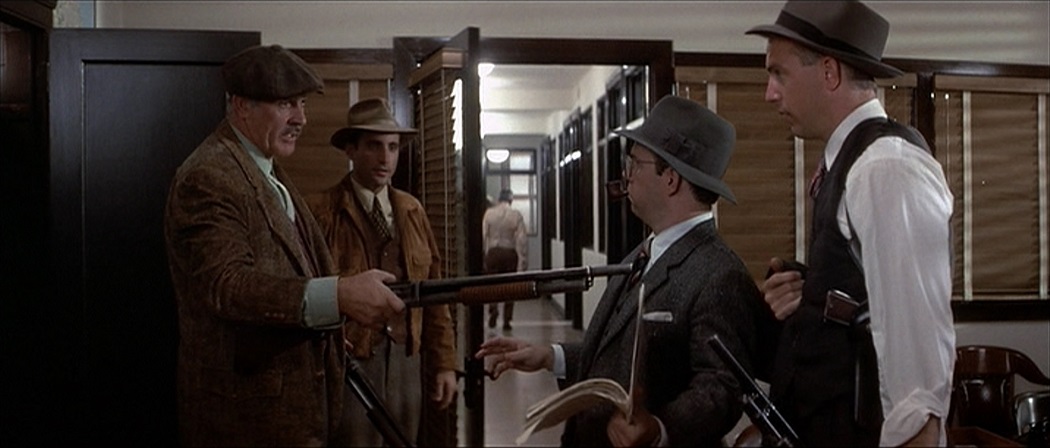
Meanwhile, Liam Gaughan at /Film includes The Untouchables on his list of "The 12 Best Mob Movies You Need To See Immediately" ...
There's a fear that sometimes mafia films can try too hard to humanize gangster characters, and as a result the audience may end up sympathizing with violent men who have done truly horrible things. However, some of the best mob movies are those that focus on the law enforcement officers that attempt to bring these dangerous criminals to justice. Based on the 1957 novel of the same name, Brian de Palma's 1987 classic "The Untouchables" tells the true story of the Chicago cops that brought down the notorious Al Capone (Robert De Niro). De Palma has experience working in the horror and thriller genres, and here he combines flashy stylistic flourishes with a more classic version of the old-school gangster epic.
Brian De Palma always creates an interesting tone with his crime films, which combine well developed characters with more elaborate stylistic flourishes. "Carlito's Way" is a fascinating look at a gangster's career that features one of Al Pacino's best performances ever; Pacino is known for giving exaggerated performances and can often be quite hammy, but he's remarkably restrained here in his role as Puerto Rican gangster Carlito Brigante. There are obvious similarities within De Palma and Pacino's other famous collaboration, 1983's "Scarface," but "Carlito's Way" is the stronger film.
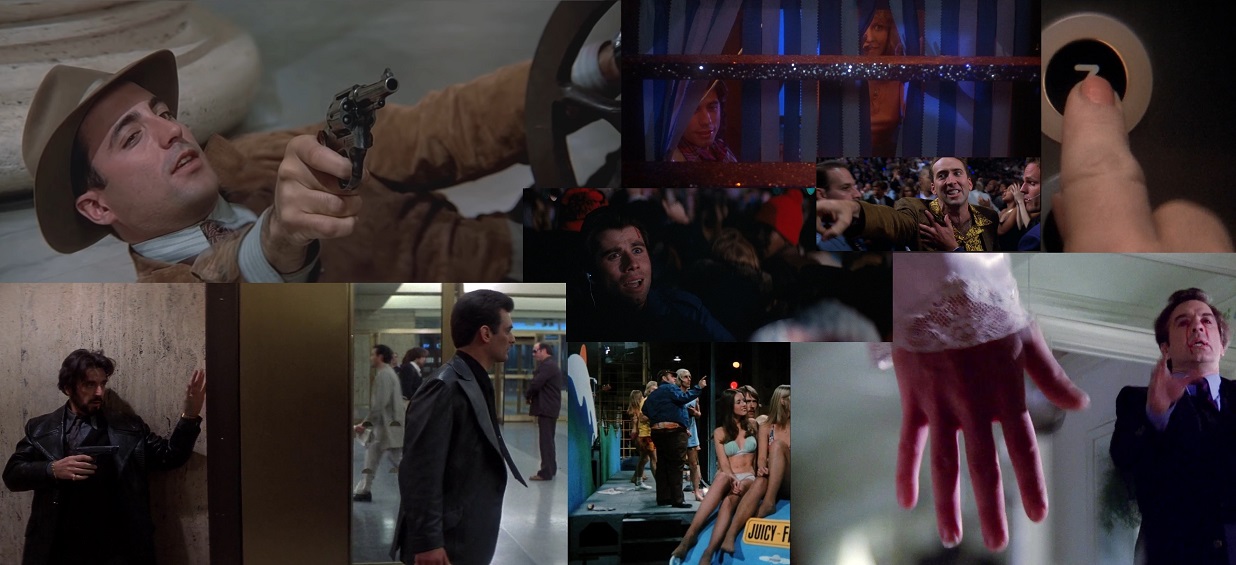
Bartlett kicks off his list with Snake Eyes at number 15:
"Snake Eyes" has been much maligned over the years, and a lot of this is deserved. That being said, Brian De Palma has always been a director who thrives on the technical side of things, and the opening shot shows he'd lost none of his ingenuity. Beginning with a TV news report on screen, De Palma pulls us back into a stadium and seamlessly merges into a 12-minute seemingly uninterrupted Steadicam shot. It follows corrupt detective Ricky Santoro, played by a wonderfully animated Nicolas Cage, who almost worked with De Palma again on a canceled "Untouchables" prequel. As Santoro interacts with several characters, only breaking from the shot once the assassin's bullet finds its target. It's a sequence full of De Palma's signature style, with incidental details gaining greater significance later on.There's a sense of misdirection to "Snake Eyes" which gets clearer as the subterfuge of the fight becomes apparent. The pre-fight events are continuously replayed "Rashomon"-style as the film goes on, so it's fitting that we initially see everything in one go. It's like a magician showing you the trick before explaining how he did it. It's a superbly frenetic start to the film, one that draws attention to itself as audacious, unsubtle, and very fun.
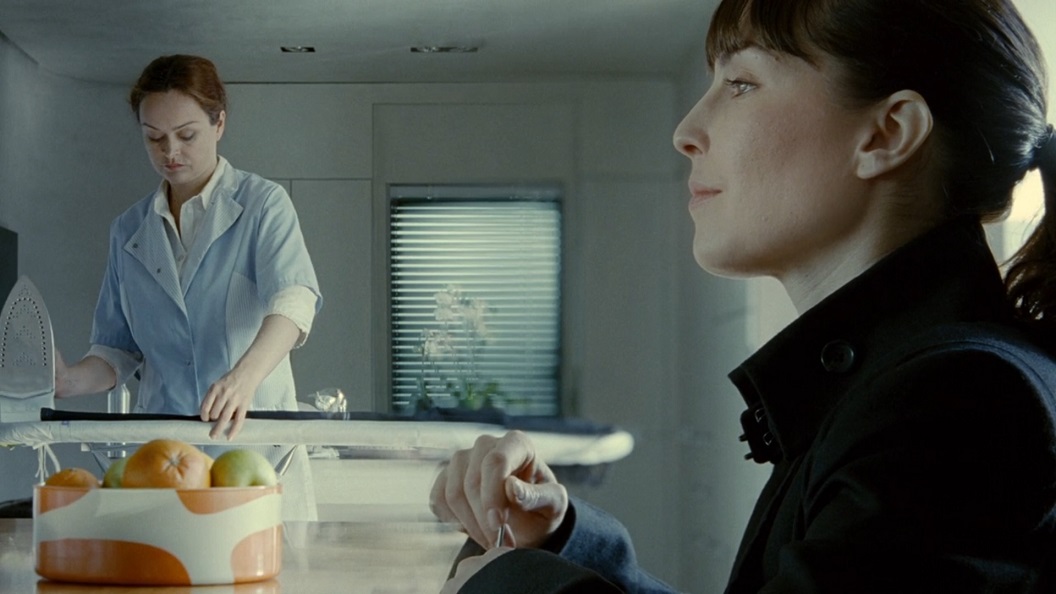
Most of the time, I don't need to talk too much with the directors I work with. Almost everyone thinks that the director of a film and the cinematographer are communicating during the entire shoot, but in my case it is not true. I need to see the films they have made before, ask them a few weeks before what they are looking for in photography and that's it. Some give me references: 'Go see this film or 'I'm looking for a light like this'... For example, in 'The Bird of Happiness', I asked Pilar Miró what she wanted before shooting. She didn't say anything to me, she just looked in a folder and took out a print of 'The Scream', by Eduard Munch. 'This is what I want'. And from there, one starts to guess.Q. Along these lines, the more accomplished your work is, the less it is perceived by the general public?
A. Sometimes it happens. But what I don't want is for the photography to be noticed. When someone tells me: 'I've seen your film, what great photography', I already know that they haven't seen it or they didn't like what was being told, that's why they paid a lot of attention to the photography. I told Pedro Almodóvar that 'Parallel Mothers' has two readings. One, to see it normally. Another, to see all the details that Pedro has put in and that I have illuminated, because they enrich the film. Perhaps, at the beginning you follow the story and you are not so aware that they exist. In a way, you have to watch it twice.
Q. A book, a painting, a piece of furniture… How do you make those hidden messages visible in Almodóvar's plans?
R. In 'Parallel Mothers', I have basically used very closed diaphragms. [The diaphragm is the part of the lens that regulates the amount of light that enters the camera]. Not only does this mean that less light enters, but the more the diaphragm is closed, the more objects begin to appear in focus and sharp in the shot.
I think that when playing with that, with the depth of field, there can be two types of narration in cinema. There is one that has now become fashionable throughout the world: by opening the diaphragm a lot, almost the entire frame is out of focus, except for a single object or a character that is closer to the camera. That's an advantage for the production of the film, because you don't have to worry too much about what's around you.
The other approach consists of establishing several fields of action that are seen on the screen. The viewer can see them all, first, second, third... All of this enriches the story because there can be different layers of narration. For example, if a character says something in the foreground and another reacts elsewhere in the shot. This allows the viewer to feel inside the place, accompanying the actors. If only one part is in focus, you sit in the chair and see a completely flat screen. For me, it's terrible because the viewer doesn't participate. They tell him a story that is perhaps very interesting, but his vision is very much driven by what the director wants to tell him. He cuts the wings of the story and the relationship. In the cinema that I like, I need more depth of field and a richer image.
P. Where do you think that trend comes from?
R. That started in the 80s and 90s. Many of the important directors of that time came from the world of advertising. The 'spots' that were most popular then lasted about 30 seconds and concentrated many different shots in a short time. And the difficulty is added that they were made for the televisions of the time, which were smaller. That's how they came up with the idea of concentrating the viewer's attention on a single point, on the product, and that's it. For a small screen, that's fine. But for a screen like this [points to the theater canvas], the viewer is out of the game because he only pays attention to a very small portion.
I think that in these circumstances, even if the stories are good, they don't leave a mark because they don't let you participate. They are flat and unrelieved exposures. Within a quarter of an hour, you've forgotten. For the record, all this is a theory of mine… It is difficult to verify. I think that the cinema of the 40s to the 70s left a mark on you, because the relief of the narration was very careful. The tendency to simplify it has to do with an easy cinema, faster to produce in this sense and cheaper, because everything that is outside the field does not matter. It is an orphan cinema. We are at a crossroads. On the one hand there is covid, which drives viewers away from theaters. On the other hand, there is the orphanage of films that leave a mark on you. One of these that makes you want to debate when you go out.
P. Is this audiovisual bill that simplifies the viewer's gaze, or does it happen the other way around?
R. A significant thing happens. This fashion for shallow shots means that the manufacture of new camera lenses concentrates on producing very beautiful blurs. I know that the big companies look for them, because I know some manufacturers. I have asked them about the new lines and they answer the same thing: they are looking for the out-of-focus part of the image to be very beautiful because that is what people ask for. It is the whiting that wags its tail. It seems like a mistake to me, but this covers us all.
It's the same with mobile phones. That of the 'bokeh effect' or the 'portrait mode' is increasingly taken care of, because people like to see themselves. That's why the rest is blurred, so that the portrait focuses on you, logically. I think this can go beyond aesthetics... There is an invasion of images of ourselves, of ourselves and of our friends. Never before have we been so aware of the passage of time on our image. Before, people were not aware of their own aging, of the passing of the years on themselves. Now we take pictures of everything, we see each other when we are 18, when we are 30 and when we are 50. There was a great guy, Rembrandt, who took self-portraits from when he was very young until he was very old. He painted the passage of time, as we do when we see ourselves grow old in the images.
I think this has something to do with the growing cult of image, beauty and, above all, youth. Wouldn't it be better if instead of staying young with surgeries, we stayed young by learning, going back to college? (Laughs).
P. You usually say that the first time Brian De Palma called you to order the photography of a film, it was because he admired your way of portraying the faces of actresses. That is something that is also seen in his filmography with Almodóvar.
R. This is where theater is opposed to cinema, although they are branches of the same tree: in the actors' gaze. The theater actor works with the body and with the voice. But the film has to work a lot with the look. The eyes are very important to express... If the story is impregnated with the gaze, it is taken to another level. I think it's something that can be seen in the eyes of Antonio Banderas in 'Pain and Glory'.
I say that cinema and theater are the branches of the same tree, that of the represented story. I think there is something that we forget sometimes. For me, cinema is form, to a large extent. The interpretation and the story are very important, but so is how they tell it to us. What shots are chosen, what camera movements, how is the light, the montage... Normally, that is not analyzed. I note that almost all film criticism comes from literature. The first thing a critic does, normally, is to tell you about the story, to tell you about the cast. But the visual form is not paid attention to. This is normal if one takes into account that there is no teaching about image and representation.
Q. In an increasingly visual world, do we need a kind of 'literacy' of images?
R. Lately I am advocating the creation of an image subject. What is cinema, painting, sculpture... What is everything that has been used as representation in the history of mankind. That, from an early age, students begin to discover what is used to tell stories visually. Right now, there is a large part of the youth that does not read, but almost all of them consume many audiovisual products. Even they themselves, through their networks, create small stories in images. They are taught to read and write, things that fewer and fewer of them do outside of school. A subject dealing with the image through the ages, in all its variants, would be good. Of cinema and television, of course, but of many other things. A painting is also a story, painters tell stories through the image. Students need to know how to analyze this and take advantage of it. Above all, because in our civilization images are constantly used as a means of expression. It's very important.
And this has more implications: a lot of news and many images are falsified. If we do not leave aside the tools to analyze photographs, interpret them and create them, it is possible to be taught to detect these manipulations. We are invaded by the image and it is not a bad thing. Yes, it is a very different culture from the one I knew, much more influenced by literature, but our kids should learn to use the visual and express themselves with it. As we were taught with literature.
P. What can be learned from those codes in the cinema?
R. Many times, visual codes depend on gender. It's true that I haven't worked much on that type of film. Action, superhero, horror... I remember one I did with Chicho Ibáñez Serrador, 'Who can kill a child?' It was a horror film, set on a beach and with some kids as murderers. He gave me the film and I proposed to take a photograph far from the typical horror film. Paradoxically, that the terrifying was in the situation and not in the image, because then it becomes a movie. If you take a photograph of summer and the Mediterranean, people are a little surprised and scared. Because he thinks it can happen to them. Otherwise, the horror genre is full of clichés. I always laugh when the topic of the girl who goes into the alley alone comes up. There's already bullshit there... A girl would never go in there alone! Photography is full of sparkles, backlights, long shadows... In Ibáñez Serrador's film, I tried to escape from the genre in terms of photography. From time to time, he would say to me: 'Hey, why don't we make a shadow on the wall as threatening?' And I told him better not, he's not interested... Besides, with a natural thing, the public is more surprised. If the door creaks and a shadow appears, we already know what will happen.
Somehow, 'The Skin I Live In' also had that point of suspense and terror. But neither Pedro nor I wanted a genre film. We wanted to tell some facts and not know very well what was going to happen. For my taste, what happens in the genre is that what is going to happen is telegraphed, you see it coming if you have a certain visual culture. But if you don't give any indication, people are left baffled. I try to escape codes in lighting.
P. In addition to naturalism, you emphasize the elaboration of light, the creation of volume on the screen. Where does this concern come from?
A. I have a lazy eye. It works worse than the other and, since the relief is given by both eyes, my brain is inclined to pay more attention to my good eye. Because of this, I have difficulty perceiving the volume. I have a hard time seeing things in relief, so I create it with light. The lighting helps me to highlight the volume of things and, incidentally, to correct this defect that I have.
In almost all my works, I start from the idea that I am always learning. I am always looking at everything, especially the innovations that are coming out. Once, I had the idea of using fluorescent lights when it was not usual in the cinema. I needed a flat, low light to illuminate a table with multiple characters. I was thinking a lot about making a wooden one to put several spotlights with a tracing paper on top... Well, a mess. And I thought: 'But this could be a home fluorescent'. So I went with my production manager to a hardware store to buy some tubes and we started using them. In fact, when he had filming outside, he traveled with a trunk full of fluorescent lights, because they weren't used and there weren't any anywhere. Now it's the most normal thing in the world.
P. Sometimes, changes are not well received... You also often say that, when you were studying at the Official School of Cinematography, they told you that cinema was not made for you.
A. Yes. It was for a very simple reason. When I started, what was done was a studio light, with very defined shadows. That seemed a bit false to me and I was always looking for ideas to find another way to light. I did tests of all kinds. In film school, I was considered a dangerous madman. I tried to see if by bouncing the light off a wall or by putting some white paper on some black flags... That's what led Juan Julio Baena, who ran the school, to tell me that the cinema was not made for me. But I didn't pay any attention to him. He was very convinced of what he was doing. When someone is sure of what they're looking for, even if they can't find it, it's hard to keep them from it.
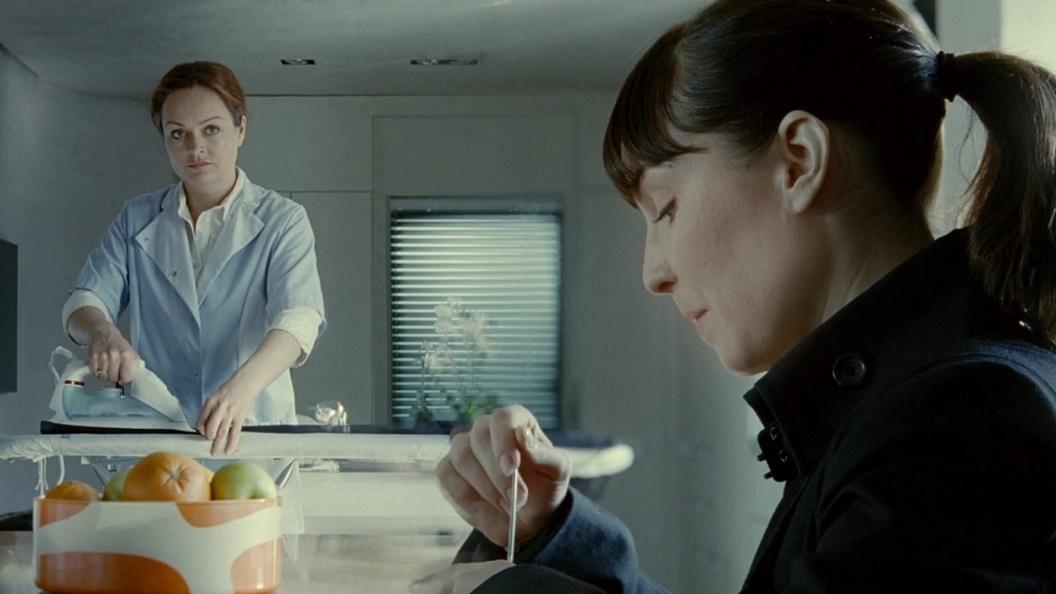
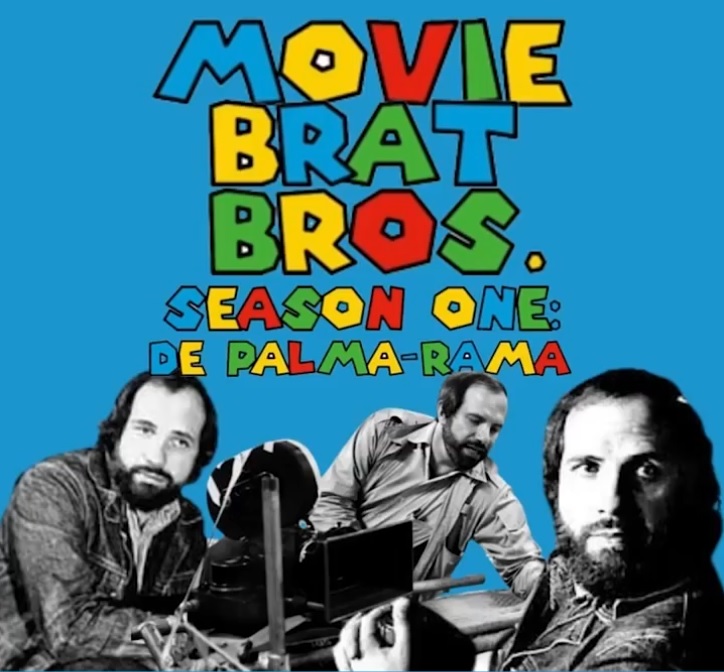
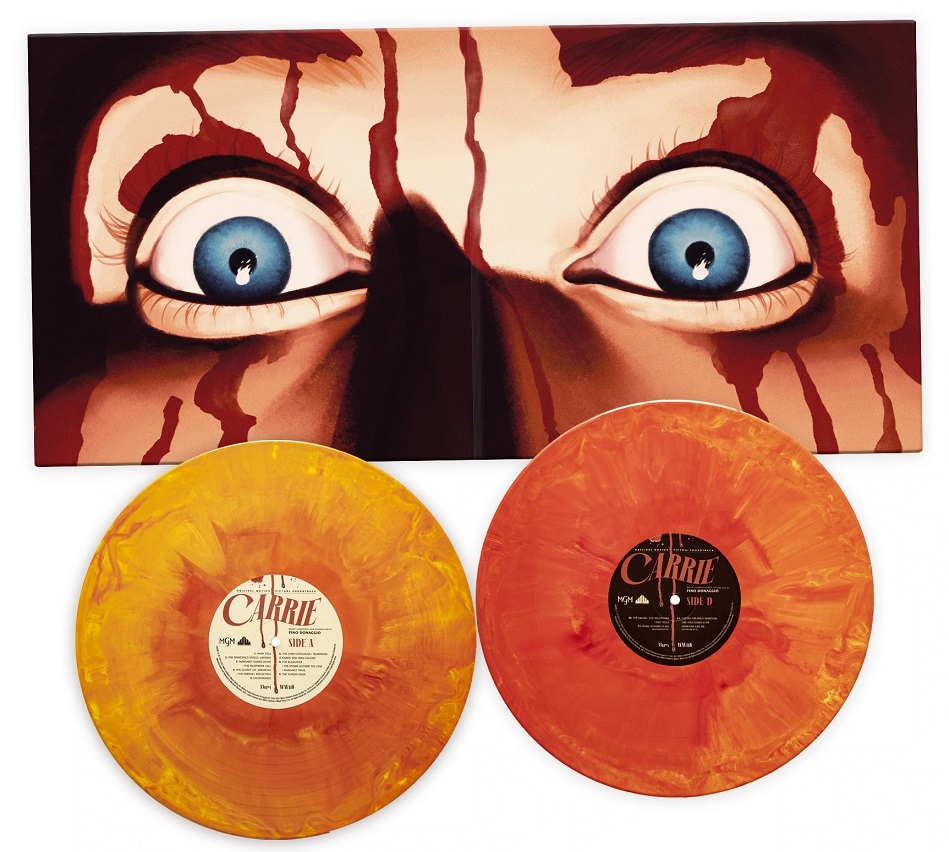
Waxwork Records is thrilled to present CARRIE Original Motion Picture Soundtrack by Pino Donaggio! Expanded and re-mastered for its 45th anniversary, this deluxe double LP album marks the very first time that the complete film music has been released on vinyl. Carrie is a 1976 Horror film adapted from author Stephen King's very first published novel of the same name. The movie stars Sissy Spacek and is directed by Brian De Palma (Scarface, Phantom Of The Paradise).The score by legendary composer Pino Donaggio (The Howling, Tourist Trap) skillfully captures the pressure of forced innocence, the humor of teen drama, and the trauma of coming of age as a girl in 1970’s America. The album also features the tracks “Born To Have It All” and “I Never Thought Someone Like You Could Love Someone Like Me” by Katie Irving.
CARRIE Original Motion Picture Soundtrack features the expanded film music re-mastered and pressed to 180 gram "Prom Fire” colored vinyl, with new artwork by Phantom City Creative, and old-style tip-on gatefold jackets with matte satin coating.
CARRIE Original Motion Picture Soundtrack Features:
The Expanded and Re-Mastered Soundtrack
180 Gram "Prom Fire" Colored Vinyl
New Artwork by Phantom City Creative
Deluxe Packaging
Old Style Tip-On Gatefold Jackets with Matte Satin Coating

